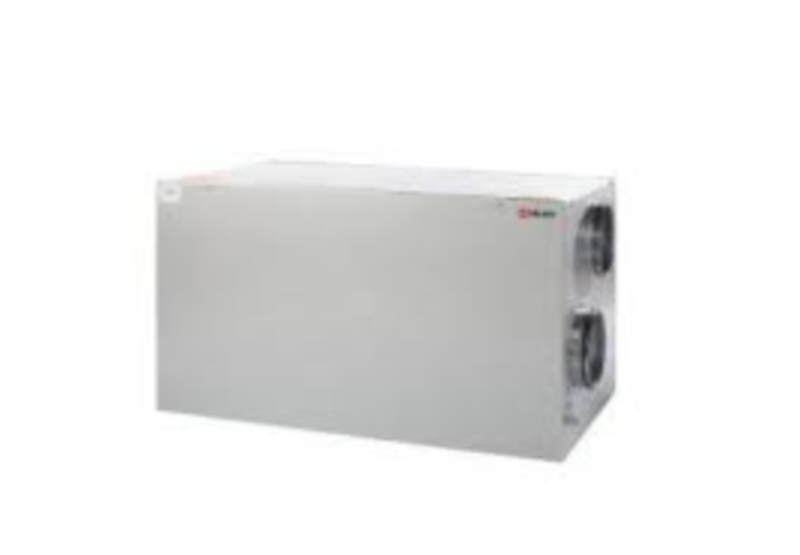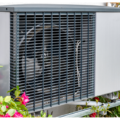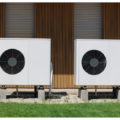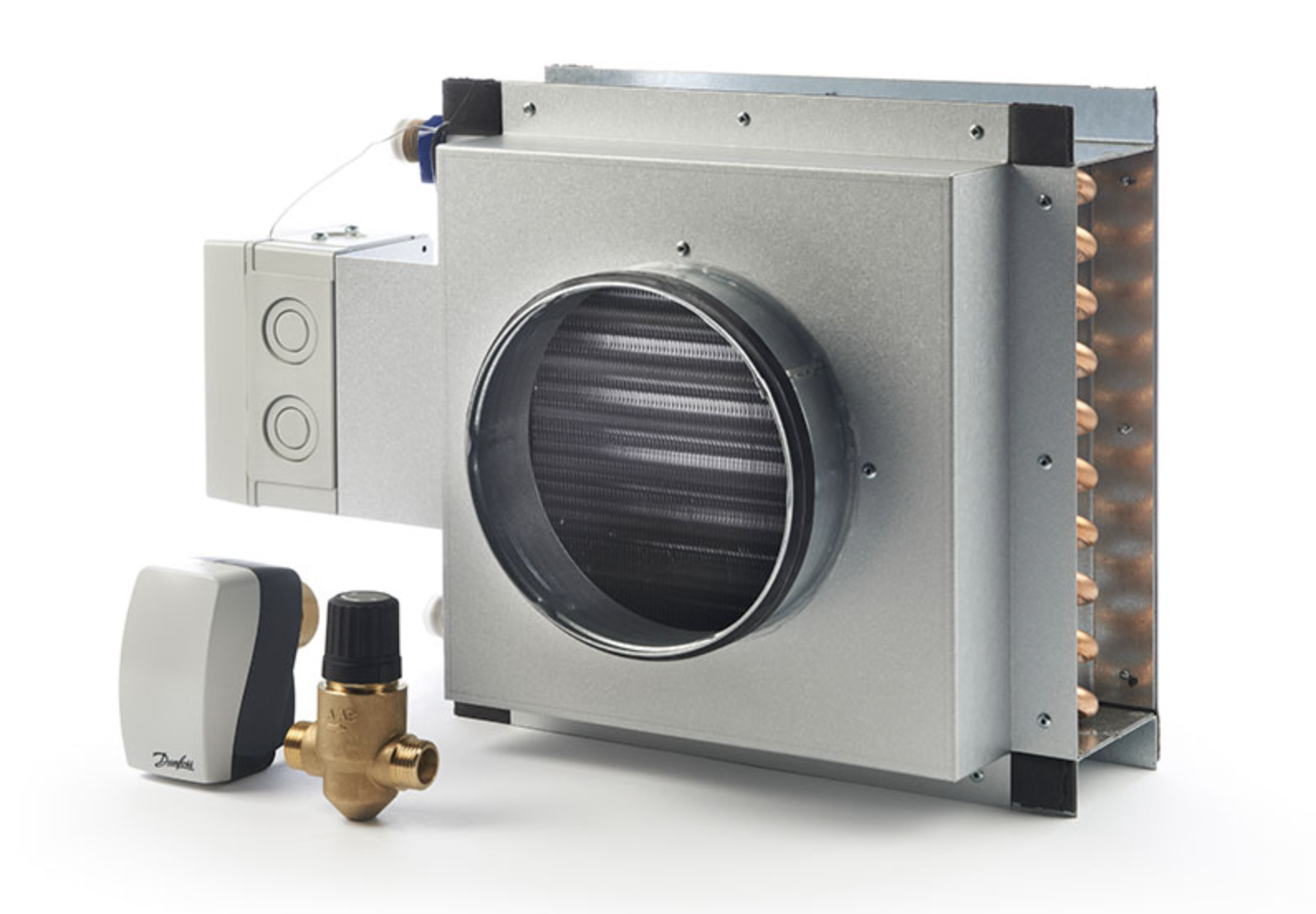
The Official Supplier for Nuenta
Supplying Nilan systems to Nuenta in the UK
In today’s world, energy efficiency is more important than ever. As we strive to reduce our carbon footprint and lower energy costs, one area that often gets overlooked is ventilation systems. Enter mechanical ventilation heat recovery systems. These innovative systems not only provide fresh, clean air for our homes and buildings but also maximize energy efficiency by recovering and reusing heat that would otherwise be wasted.
With energy costs on the rise, the benefits of mechanical ventilation heat recovery systems cannot be ignored. By capturing and redistributing heat, these systems can significantly reduce the amount of energy needed to heat or cool a building. This not only saves money but also contributes to a greener and more sustainable future.
But the advantages don’t stop there. Mechanical ventilation heat recovery systems also improve indoor air quality by removing stale and polluted air while replacing it with fresh, filtered air. This can result in better health and comfort for building occupants, making it a win-win situation.
Whether you’re a homeowner looking to upgrade your ventilation system or a developer seeking energy-efficient solutions for your building project, considering a mechanical ventilation heat recovery system is a wise choice.
Mechanical ventilation heat recovery systems (MVHR) are sophisticated systems designed to enhance indoor air quality while maximizing energy efficiency. At their core, these systems work by continuously exchanging stale indoor air with fresh outdoor air. The innovative aspect of MVHR is that while this exchange occurs, the heat from the outgoing stale air is transferred to the incoming fresh air through a heat exchanger. This process significantly reduces the energy required for heating or cooling the air entering the building.
The system typically consists of two main air streams: one for incoming air and another for outgoing air. These streams pass through the heat exchanger, which allows for thermal energy transfer without mixing the two air flows. As the warm, stale air exits the building, it transfers its heat to the cooler, incoming air, pre-warming it before it enters the living space. This means that less energy is needed to achieve a comfortable indoor temperature, resulting in notable energy savings.
In addition to the heat exchange process, MVHR systems often incorporate filters to clean the incoming air. This ensures that pollutants, allergens, and particulate matter are removed before the fresh air enters the living environment, making the air healthier and more pleasant to breathe. The fans in the system are also designed to operate quietly, ensuring that the ventilation process does not disrupt the occupants’ comfort.
The benefits of mechanical ventilation heat recovery systems extend beyond mere energy efficiency; they encompass a range of advantages that contribute to overall comfort and well-being in indoor environments. One of the primary benefits is the consistent supply of fresh air, which is crucial for maintaining a healthy living space. By continuously exchanging stale air with filtered outdoor air, MVHR systems effectively reduce indoor air pollution, which can be caused by various sources such as cooking, cleaning products, and even furniture.
Another significant advantage is temperature regulation. MVHR systems help maintain a stable indoor climate by recovering heat from outgoing air, which can be particularly beneficial during extreme weather conditions. In winter, for instance, the incoming air is pre-heated, reducing the load on the heating system. Conversely, during summer, the system can help cool incoming air, ensuring that the indoor environment remains comfortable without excessive reliance on air conditioning.
Furthermore, MVHR systems can contribute to the longevity of a building’s structure. By controlling humidity levels and preventing moisture buildup, these systems help reduce the risk of mold and damp issues, which can compromise both the integrity of the building and the health of its occupants. This proactive approach to ventilation and humidity management can lead to a more resilient building that requires less maintenance over time.
One of the standout features of mechanical ventilation heat recovery systems is their remarkable energy efficiency. These systems are designed to minimize energy loss, which is a common issue in traditional ventilation methods. In many homes and buildings, the need for fresh air often results in the loss of heat, leading to increased energy consumption for heating or cooling. MVHR systems address this by recovering a significant portion of the heat from the outgoing air, effectively recycling energy that would otherwise go to waste.
Research indicates that MVHR systems can achieve efficiencies of up to 90% or more in heat recovery, meaning that only a fraction of the energy is required to maintain comfortable indoor temperatures. This level of efficiency not only translates to lower energy bills for occupants but also reduces the overall demand on heating and cooling systems. As a result, less energy is consumed, leading to lower greenhouse gas emissions and a smaller carbon footprint.
Moreover, as energy costs continue to rise, the implementation of energy-efficient technologies like MVHR systems becomes increasingly important for both economic and environmental reasons. By investing in these systems, homeowners and builders can future-proof their properties against fluctuating energy prices while also contributing to broader sustainability goals. The energy savings realized through efficient ventilation can be significant, making MVHR systems a wise choice in an era where energy conservation is paramount.
The financial benefits of installing a mechanical ventilation heat recovery system extend well beyond the initial investment. While the upfront cost may be higher than traditional ventilation systems, the long-term savings on energy bills can be substantial. The energy efficiency of MVHR systems means that less energy is required to heat or cool the home, resulting in lower monthly utility expenses. Over time, these savings can offset the initial costs and lead to significant financial returns.
Additionally, MVHR systems can qualify for various energy efficiency incentives and rebates offered by governments and utility companies. Many regions are increasingly promoting energy-efficient technologies to reduce overall energy consumption and greenhouse gas emissions. Homeowners who install MVHR systems may benefit from tax credits, grants, or rebates that can further lower the overall cost of implementation.
Furthermore, the value of a property can increase with the installation of an MVHR system. Energy efficiency is a highly sought-after feature for prospective buyers, and homes equipped with advanced ventilation systems often command higher market prices. By investing in MVHR technology, homeowners not only save on energy costs but also enhance their property’s marketability, making it a smart financial decision in the long run.
The health benefits associated with mechanical ventilation heat recovery systems are profound and far-reaching. One of the most significant advantages is the improvement in indoor air quality. Traditional homes often suffer from inadequate ventilation, leading to the buildup of indoor pollutants such as dust, allergens, and volatile organic compounds (VOCs) from furniture and cleaning products. MVHR systems mitigate this issue by continuously filtering and replacing stale air with fresh, clean outdoor air, significantly reducing the concentration of harmful pollutants.
Additionally, the regulation of humidity levels is another crucial health benefit of MVHR systems. Excess moisture in the air can lead to mold growth, which poses serious health risks, particularly for individuals with respiratory issues or weakened immune systems. By managing humidity effectively, MVHR systems create a healthier indoor environment, reducing the risk of mold and associated health complications. This feature is especially important in areas with high humidity or in homes prone to water damage.
Furthermore, improved ventilation contributes to better overall comfort and well-being for occupants. Research has shown that environments with good air quality can lead to enhanced concentration, productivity, and even mood. For families, this means a healthier living space where children can thrive and adults can perform at their best. By investing in a mechanical ventilation heat recovery system, individuals are not only making a choice for energy efficiency but also prioritizing their health and quality of life.
When considering the installation of a mechanical ventilation heat recovery system, several factors should be taken into account to ensure optimal performance and satisfaction. One of the foremost considerations is the size and layout of the building. It is essential to have a system that is appropriately sized for the space to achieve maximum efficiency. An undersized system may struggle to provide adequate ventilation, while an oversized system can lead to excessive energy consumption.
Another crucial aspect to consider is the design of the ductwork. The efficiency of an MVHR system can be significantly impacted by the layout and installation of the ductwork. Properly designed ductwork minimizes resistance and maximizes airflow, ensuring that the system operates effectively. It is advisable to consult with professionals who specialize in HVAC systems to design a duct layout that meets the specific needs of the building.
Additionally, the local climate can influence the performance of an MVHR system. In regions with extreme weather conditions, it is important to select a system that can handle the temperature variations effectively. Some systems come with features such as frost protection to prevent ice buildup in colder climates. Understanding the local climate and selecting a system designed for those conditions can enhance the longevity and efficiency of the installation.
There are several misconceptions surrounding mechanical ventilation heat recovery systems that can deter potential users from exploring their benefits. One common myth is that MVHR systems are too noisy to be practical for residential applications. While it is true that some older systems may have had noise issues, modern MVHR systems are designed with noise reduction features, including quiet fans and sound-absorbing materials. Many users report that the sound of the fans is minimal and often resembles a gentle hum, making them suitable for homes and offices alike.
Another misconception is that MVHR systems require excessive maintenance and can be complicated to operate. In reality, these systems are designed to be user-friendly and require only periodic maintenance, such as filter replacement and cleaning of the heat exchanger. Most systems come with user manuals detailing the maintenance process, and many homeowners find that they can perform basic upkeep themselves without the need for professional assistance.
Finally, some people believe that mechanical ventilation heat recovery systems are only suitable for new constructions and cannot be retrofitted into existing homes. However, advancements in technology have made it possible to install MVHR systems in older buildings with minimal disruption. While retrofitting may require thoughtful planning and design, it is a viable option for homeowners looking to enhance their indoor air quality and energy efficiency, regardless of the age of their property.
To ensure the longevity and optimal performance of mechanical ventilation heat recovery systems, regular maintenance and care are essential. The first step in maintaining an MVHR system is to clean or replace the filters as needed. Most systems come equipped with filters designed to capture dust, pollen, and other airborne particles. Depending on the environment and the level of use, filters should typically be checked and cleaned or replaced every three to six months to ensure efficient operation and maintain indoor air quality.
In addition to filter maintenance, the heat exchanger should also be inspected periodically. Dust and debris can accumulate in the heat exchanger, diminishing its ability to transfer heat effectively. Cleaning the heat exchanger is usually a straightforward process, and it is recommended to follow the manufacturer’s guidelines for the best practices. Regular checks of the ductwork are also important to ensure that there are no blockages or leaks that could hinder airflow.
Lastly, it is beneficial to schedule professional inspections at least once a year. A qualified technician can provide a thorough assessment of the system, identify any potential issues, and ensure that all components are functioning correctly. By prioritizing maintenance, homeowners can significantly extend the lifespan of their MVHR systems and continue to enjoy the benefits of energy efficiency and improved indoor air quality well into the future.
As the world increasingly shifts towards sustainability and energy efficiency, mechanical ventilation heat recovery systems represent a crucial innovation in the quest for greener living spaces. With their ability to provide fresh air while recovering energy, these systems offer a compelling solution to the challenges of indoor air quality and energy consumption. As technology advances, we can expect even more efficient and user-friendly MVHR systems to emerge, making them accessible to a broader audience.
Moreover, as regulations around energy efficiency become stricter, the adoption of MVHR systems will likely become more commonplace in both residential and commercial buildings. Developers, builders, and homeowners will increasingly recognize the long-term benefits of investing in these systems, not only for financial savings but also for improved health and well-being.
In conclusion, embracing mechanical ventilation heat recovery systems today is a step towards a more sustainable and healthier future. By enhancing energy efficiency, improving indoor air quality, and reducing carbon footprints, these systems are more than just a trend—they are a necessary evolution in how we design and live in our spaces. As we look ahead, the continued integration of MVHR systems into our buildings will play a pivotal role in shaping a more energy-conscious and health-oriented society.
 The Comfort CT300 / Polar
The Comfort CT300 / Polar
 Heat Pump Units
Heat Pump Units
 The Nilan Comfort 450: A Top-of-the-Line Ventilation Unit
The Nilan Comfort 450: A Top-of-the-Line Ventilation Unit
 Expert Advice On Choosing The Right Nilan Supplier For Your Project
Expert Advice On Choosing The Right Nilan Supplier For Your Project
 Top 10 Benefits Of Working With A UK Ventilation Supplier
Top 10 Benefits Of Working With A UK Ventilation Supplier
 How To Save Money By Choosing The Right Nilan Installer For Your Home
How To Save Money By Choosing The Right Nilan Installer For Your Home
 What Makes Sorption Heat Pumps Stand Out From Traditional Options?
What Makes Sorption Heat Pumps Stand Out From Traditional Options?
 Do Absorption Heat Pumps Provide An Energy-Efficient Solution?
Do Absorption Heat Pumps Provide An Energy-Efficient Solution?
 Have You Considered Using Thermotransport Heat Pumps In Your Home?
Have You Considered Using Thermotransport Heat Pumps In Your Home?
 The Ultimate Guide to Heat Pumps
The Ultimate Guide to Heat Pumps